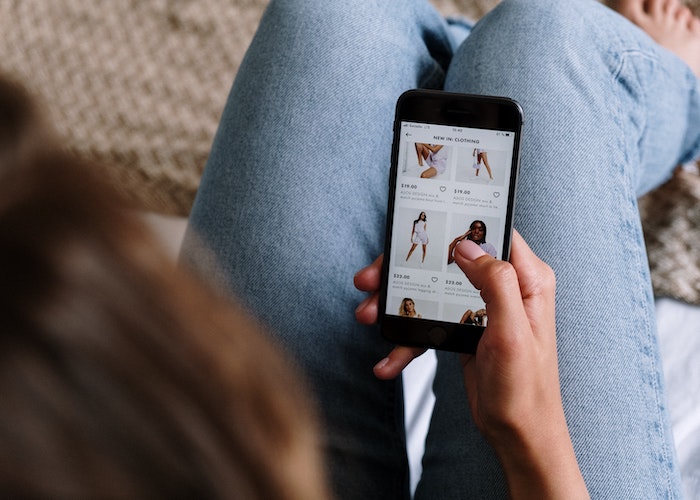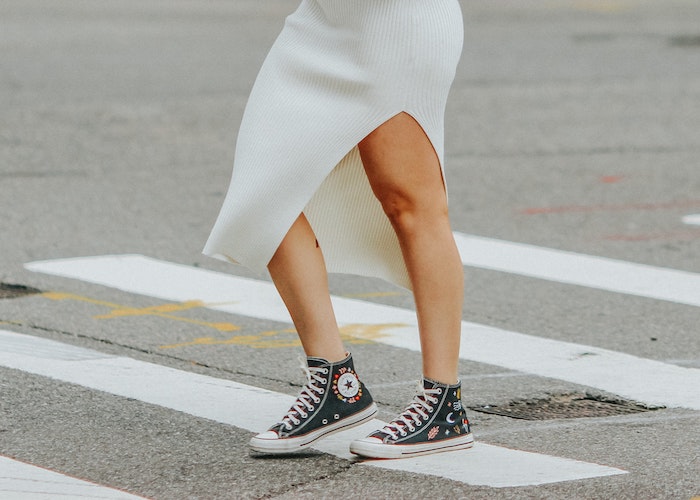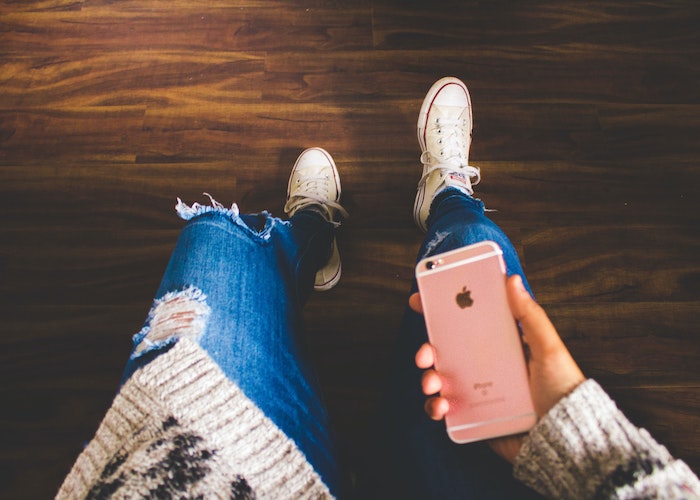7 #NoFilter Reviews Of The Most-Shopped “Instagram Brands”
“Glossier. Dollar Shave Club. MeUndies…”
I was never a big online shopper when I was younger. For most of my twenties, fear of using my credit card too much and an incessant need to sample and try things on kept me away from most online stores.
Lately, though, a number of factors have led me to indulge in more online purchases. I’m more financially comfortable and have learned to treat myself now and then (even with stuff I’m not 100% sure will work out). There’s also the FOMO factor. As my friends started gushing about Glossier and going crazy for Casper, I decided that maybe “internet brands” – or, as they’re properly known, D2C brands, which you’ve likely seen or heard ads for on Instagram or via your favorite podcasts – are worth trying. And before I knew it, my life was consumed by D2C.
A quick primer on what D2C is, and why your life is probably also ruled by it: D2C means “direct-to-consumer.” These are brands that sell directly to you, the customer, without the middleman of a third-party retailer. The closest they’ll usually come to a brick-and-mortar presence is a pop-up.
There’s a lot of D2C out there, more than we realize. Netflix, for example, is the D2C response to brick-and-mortar video stores. As clothing, makeup and beauty brands aim to keep costs down and quality high, many see D2C as the way to go. Plenty have subscription models (such as Dollar Shave Club, various meal kit services, and other things you didn’t realize you needed a subscription service for, like underwear).
There’s a major D2C bubble right now as that market gets more and more crowded; a few like Casper and Quip have started selling in brick-and-mortar stores (therefore becoming exactly like the brands they were trying to disrupt), and many of the more successful ones, like Peloton, Netflix, and HelloFresh are advertising on TV and billboards.
But social ads are cheap, which is why all the upstart D2C brands — ones you’ve never heard of but have apparently “broken the internet” with all their positive reviews — are targeting you on Instagram Stories and Facebook videos.
It’s easy to fall into the trap of thinking that because a brand advertises on social and has a decent marketing strategy, that means they’re actually popular and that you’re somehow missing out by not being a part of it. Over the years, I’ve experimented with a few D2C brands, and thought I’d share which are worth the money — and which you should just go to the store for.
[In case it doesn’t go without saying: Nothing was comped or provided for free; no company solicited me to try or review these products.]
My honest thoughts on 7 internet brands:
1. Dollar Shave Club
What it is: One of the first “big” D2C brands of the last decade, Dollar Shave Club is a razor subscription service. You’re sent a handle, then every month receive four replacement blades.
Price: There are a few different razor types, but the midrange one costs CAD $7.50 per month. After two years, I reduced my frequency to every two months because I didn’t find the blades wore out quickly.
My experience: For the three years I used DSC, I was extremely happy with the product and customer service. My email questions and concerns were always answered by a real human. I no longer use DSC because I’ve switched to a more waste-friendly safety razor option, but if that’s not a priority, I’d recommend this over any razor you can buy in a store.
Would I buy again?: In a heartbeat, if I ever abandon safety razors. And I’d recommend this to anyone using drugstore razors.
2. Shhhowercap
What it is: Shhhowercap is marketed as a “haute” shower cap with pretty, fashion-forward designs. It claims to be completely waterproof, fits all head sizes and, because of its material, shape and design, can be worn as a turban-style hat.
Price: This is a way higher price than regular shower caps, at USD $43 plus shipping.
My experience: I splurged on a cap after dyeing my hair red. “Fits all heads” is a total exaggeration; I have a smaller-than-average head, and the band isn’t even remotely snug (it falls loosely below my ears). It still poufs at the back like a regular shower cap — not the haute silhouette it promised — and makes crunchy noises. It literally just looks like a shower cap. I’d never be caught dead wearing this outside. Worst of all, it doesn’t even keep my hair fully dry in the shower.
Would I buy again?: Nope, I’m sticking to the dollar store for shower caps from here on out.
3. MeUndies
What it is: MeUndies claims to be one of the softest underwear brands around. Its flagship product is a modal material, and it sells its men and women’s undies in classic, bold and funky designs. You can mix and match kits, buy a subscription service, and even buy socks, T-shirts and lounge pants as well, although undies remain at the core of what they do.
Price: Women’s hipster undies cost $45 for a bundle of three (prices go down as bundle sizes go up). Bundles are as large as 10 pairs, and there is a subscription option.
My experience: Is it the softest underwear in the world? It just might be. Over two years, it’s held up better than my cheaper Pink and Aerie underwear, and frankly better than some of my pricier underwear from Lululemon and Nike. The designs are really cute, and the cuts are great for avoiding ride-up. I’ve since bought two more sets, one of their new FeelFree material, which I love even more (same price).
Would I buy again?: Yep. I’d consider this over underwear I could buy in a store. That said, I don’t believe a subscription would be worth it, as I just don’t see myself needing that much underwear.
4. Glossier
What it is: The makers of Boy Brow, Cloud Paint, and more, with cool minimal packaging and very gorgeous models. There’s nothing particularly unique about Glossier’s offering, but that hasn’t stopped it from becoming super trendy on social media.
Price/Value: Not all Glossier’s makeup is vegan-friendly (although it’s all cruelty-free), so I only purchased one item when it went on sale: Generation G lipstick, which runs USD $20 regularly. Other items include Boy Brow ($20), Cloud Paint ($22) and its signature lip gloss ($17).
My experience: This is my favorite lipstick. Unlike most of the brands I’ve ordered online, it does actually do exactly what the photo and video ads shows. Color deposit is good, texture is great, no bleeding, and the shade is super-flattering.
Would I buy again?: I love this lipstick, but I also don’t know if it’s reasonable to say that you should buy this over something you can buy in a store. If you’re super interested in makeup, it’s worth it. If you’re less experimental and more casual about cosmetics, just go to Sephora or Target.
5. Overt0ne
What it is: Overt0ne, as it will remind you repeatedly, is “not hair dye.” It’s a tinted deep conditioning product that deposits bold colors into your hair. There are different levels of intensity for each shade and some are even formulated specifically for brown hair.
Price/Value: The entire system, which includes the dye treatment, daily conditioner, and a mini conditioner, costs CAD $47. Dye treatments alone cost CAD $17.
My experience: The initial color payoff was decent, although it should be noted that most of the models for the “for brown hair” product have highlights or balayage, so it looks a lot more intense than it would on someone with, well, actual brown hair. It looked okay, but there was essentially no lasting effect (with daily conditioner, there was still not even a hint of red in my hair after a week — here’s a pic of it five days after use). I wasn’t expecting the intensity of Manic Panic, but this was disappointing. That said, the system was incredibly gentle on my hair.
Would I buy again?: Nope. Even Manic Panic stands out more on my brown hair and is way cheaper. I would, however, recommend this for kids as it’s more gentle than dye and stains less.
6. Knixwear
What it is: Knixwear is a brand that claims to have revolutionized bra fitting. It does that by classifying most of its bras not by band sizes but by a more broad-sized system (sizes one through eight). The bras aren’t designed like a typical underwire bra, have a wider band, a seamless design, softer “cups” and in some cases are reversible.
Value: The original Evolution bra, which I purchased, runs CAD $68. This is a little lower than I’ve paid for “good” bras, but certainly is higher than what you’d find at the likes of Aerie or Pink.
My experience: I actually didn’t buy my Knixwear bra online, but at a pop-up shop, so I was able to try it on, which is a must for bras. I’m a less-common size (28B) so can rarely find a good fit for a good price. I was attracted to the bra when I tried it on under a T-shirt and figured it would be a while before I found another decent bra in my size, so I purchased it. Unfortunately, when I tried it on with blouses and dresses (the kinds of clothes I’m likelier to wear to work) it wasn’t as great. The Knixwear bra emphasizes my lack of curves, and has more of a sports bra effect under a lot of my clothes. And to be honest, it’s not the cutest bra in the world in terms of design — not that that’s everyone’s priority, but if it is, you don’t have to sacrifice fit for comfort.
Would I buy again?: No, but I still keep the bra around. The beige/black reversible combo comes in handy for my T-shirts, so it’s a good bra to wear on the weekends. But don’t believe the rationale that someone has magically reinvented bra sizes. If you can’t find a bra that works for you in terms of fit, it might be because you haven’t been properly measured yet. The wrong size is still the wrong size, no matter how your bra is designed.
7. Popfit
What it is: Popfit creates leggings with just about every fit, design and pattern under the sun. But they’re probably most well-known for creating ads that feature a lot of body diversity — and I’m not just talking about hourglass-shaped, size 12 women. Popfit’s models range from very thin to much larger, and it even features models with visible disabilities. Finally, Popfit caught a lot of attention by advertising that it was literally giving away leggings to anyone who ordered, even covering shipping.
Value: I’m always nervous about anything that claims to be free, but after six months, I can say with certainty that I was never charged for my leggings (which value at USD $47.50).
My experience: I expected the leggings to take a while to ship since that was free, but I received them within a week. They were relatively true-to-size although they’re not as stretchy as I anticipated. The design is cute, although I have chosen to hand-wash these leggings since I’ve noticed some of the detail stitching didn’t hold up through the first wash cycle. However, what is most pleasing is that they’re very durable and withstand some extremely sweaty workouts.
Would I buy again?: Because these were free, I believe this was truly the best value I could have gotten. However, if you were considering buying these for the first time at the full $47.50, I’d advise you to consider other brands such as Uniqlo, which are a similar pricing point and have a little more elasticity. I would also recommend a design that doesn’t have mesh or appliqués as they don’t hold up great in the wash.
(This post was originally published January 2020)
Bree Rody-Mantha is a full-time business journalist and part-time dance teacher based in Toronto. She covered Toronto City Hall during the Rob Ford era before transitioning to business journalism. Her areas of specialty include the influencer market, advertising, media buying, and technology.
Image via Pexels






